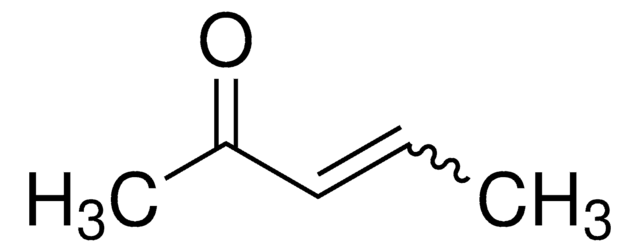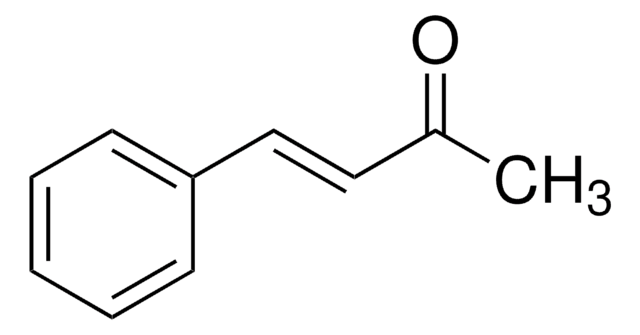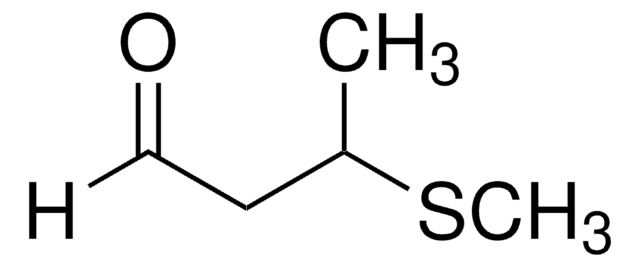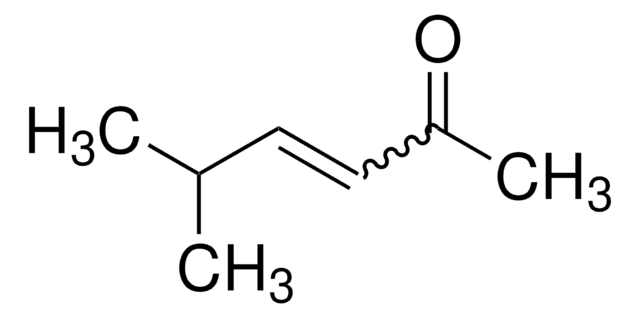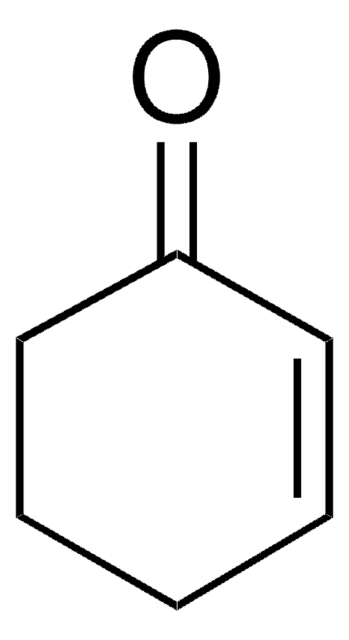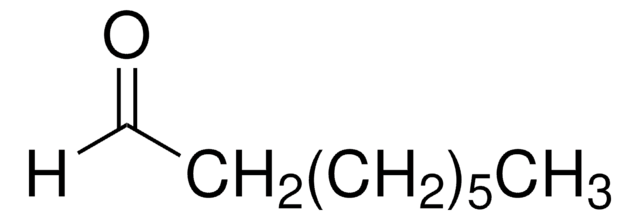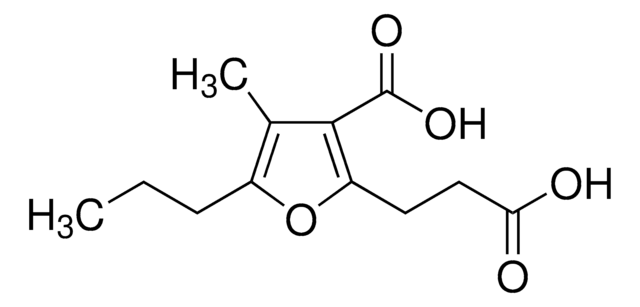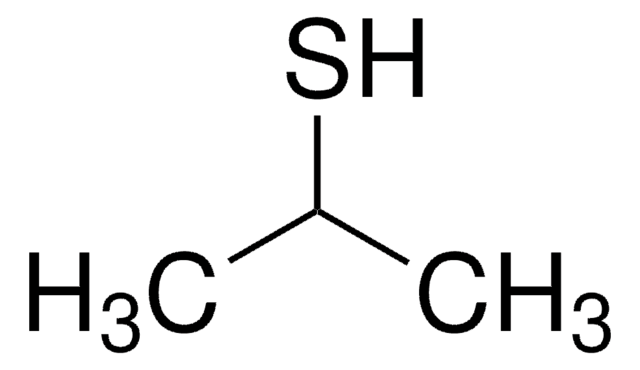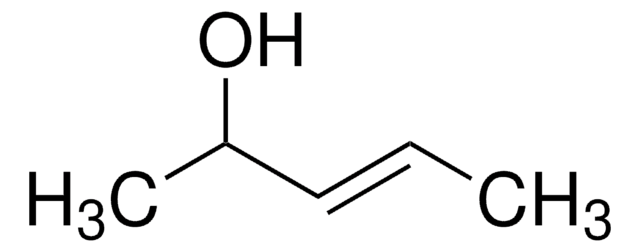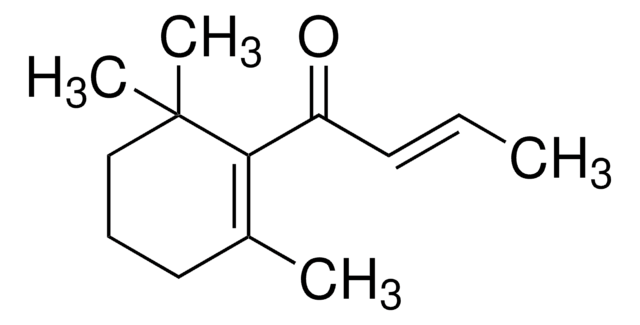W335207
4-Hexen-3-one
≥92%
Synonym(s):
4-Hexen-3-one, predominantly trans
About This Item
Recommended Products
biological source
synthetic
Quality Level
grade
Halal
assay
≥92%
refractive index
n20/D 1.44 (lit.)
bp
135-137 °C (lit.)
density
0.858 g/mL at 25 °C (lit.)
application(s)
flavors and fragrances
documentation
see Safety & Documentation for available documents
organoleptic
pungent; ethereal
SMILES string
CCC(=O)\C=C\C
InChI
1S/C6H10O/c1-3-5-6(7)4-2/h3,5H,4H2,1-2H3/b5-3+
InChI key
FEWIGMWODIRUJM-HWKANZROSA-N
Looking for similar products? Visit Product Comparison Guide
Related Categories
General description
Application
- Key lime (Citrus aurantifolia) inhibits the growth of triple drug resistant Helicobacter pylori.: Explores the antibacterial properties of key lime, potentially including volatile components like 4-Hexen-3-one, highlighting its relevance in medical microbiology and the development of alternative therapeutic agents (Lee et al., 2018).
- Chemical composition of hexane extract of Citrus aurantifolia and anti-Mycobacterium tuberculosis activity of some of its constituents.: Investigates the components of Citrus aurantifolia hexane extract, including the role of 4-Hexen-3-one in combating Mycobacterium tuberculosis, demonstrating the potential of natural products in treating infectious diseases (Sandoval-Montemayor et al., 2012).
- Kinetic investigation of the OH radical and Cl atom initiated degradation of unsaturated ketones at atmospheric pressure and 298 K.: This study examines the reactivity of atmospheric ketones including 4-Hexen-3-one with OH radicals and Cl atoms, providing valuable data for understanding their fate in the atmosphere (Blanco et al., 2012).
Disclaimer
signalword
Warning
Hazard Classifications
Acute Tox. 4 Oral - Eye Irrit. 2 - Flam. Liq. 3 - Skin Irrit. 2 - STOT SE 3
target_organs
Respiratory system
Storage Class
3 - Flammable liquids
wgk_germany
WGK 3
flash_point_f
93.2 °F - closed cup
flash_point_c
34 °C - closed cup
ppe
Eyeshields, Faceshields, Gloves, type ABEK (EN14387) respirator filter
Certificates of Analysis (COA)
Search for Certificates of Analysis (COA) by entering the products Lot/Batch Number. Lot and Batch Numbers can be found on a product’s label following the words ‘Lot’ or ‘Batch’.
Already Own This Product?
Find documentation for the products that you have recently purchased in the Document Library.
Customers Also Viewed
Our team of scientists has experience in all areas of research including Life Science, Material Science, Chemical Synthesis, Chromatography, Analytical and many others.
Contact Technical Service